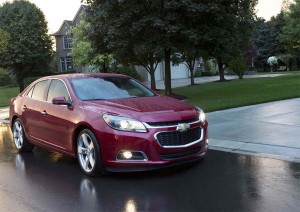With increasingly stringent mileage standards coming down the pike over the next decade, automakers are frantically racing to find ways to boost the fuel economy of their vehicles. Some new features would yield benefits that are barely measurable, others could add significantly to a vehicle’s price tag. But new Stop-Start engines are delivering significant mileage benefits, often without additional cost to consumers.
A new study suggests that Stop-Start technology – which shuts an engine off, rather than idling – can reduce fuel consumption by anywhere from 5% to 7%. And it achieves a similar reduction in the production of global-warming CO2 emissions, according to research by the AAA.
“Up to seven percent improved fuel economy can mean a $179 annual fuel savings* for consumers,” says Greg Brannon, Director of AAA’s Automotive Engineering and Industry Relations team. “The technology requires only minor adjustment for motorists – automatic stop-start technology is simply applied to standard combustion engines.”
The auto club based its estimate on a motorist driving 15,000 miles a year in a vehicle averaging 20 mpg, with fuel prices running $3.65 a gallon. At $4 and above, the savings can grow rapidly. On the other hand, the financial benefits of Stop-Start decline when the technology is used on vehicles already getting better mileage.
(Americans like potential safety advantages of autonomous vehicles. Click Here for more.)
Automakers and auto buyers alike appear to be embracing the new technology, though not everyone is enamored. Manufacturers are using a number of different methods to achieve similar results, but some of those approaches have generated complaints from motorists about unpleasant levels of noise and vibration. And some studies show the mileage benefits of Stop-Start are quite as good as those shown by the auto club study.
Some makers, such as Hyundai, have justified delaying the introduction of the technology by arguing that savings are more in the range of 1% to 3%. In part, the actual number may vary depending upon how and where a motorist drives. Stop-Start systems are sometimes referred to as “micro-hybrids,” and like conventional hybrids, they achieve their best results when driven in urban conditions with a lot of stoplights or other interruptions.
(Faulty infotainment systems frustrating buyers, reports new JD Power study. Click Here for more.)
When the vehicle would normally idle, Stop-Start instead shuts the engine off automatically, instantly restarting the car as the motorist’s foot comes off the brake.
Some manufacturers simply beef up the conventional starter motor to handle Stop-Start duties, others switch to a separate, beefier motor specifically designed for the function. The more basic approach is less costly but can create more vibration when the engine restarts, and a more apparent – and less pleasant whine. BMW, for one, has been criticized for the Stop-Start system used on some of its recent products because of that issue.
Some makers, notably luxury brands like Porsche, allow a motorist to disable the Stop-Start function if they don’t like the way it sounds or feels, though AAA researchers contend that motorists generally get used to the technology quite quickly.
And they appear to be seeking it out more and more. While Navigant Research reported the technology was used on only 500,000 vehicles sold in the U.S. last year – out of 15.5 million new cars, trucks and crossovers – it estimates that will reach 7 million by 2022.
A study by Lux Research is even more upbeat, predicting Stop-Start will be found on as many as 8 million vehicles sold in the U.S. 2017. In Europe, where fuel prices can run double what Americans pay, Stop-Start is now found on 50% of new vehicles.
Early on, the technology was found primarily in luxury vehicles, and even then carried a premium that could run as much as $1,000. Today, it is often offered on mainstream models, option pricing dropping to just a few $100, and a growing number of manufacturers making it simply a standard feature.
A full 97% of the current Chevrolet Malibu sedans rolling off dealer lots are equipped with a 2.5-liter inline-four engine that includes Stop-Start.
While Chrysler estimates Stop-Start will yield a more modest benefit of around 3% in fuel savings, the technology will nonetheless be added to two 2015 models, the new Chrysler 200 sedan and the Jeep Cherokee with a 3.2-liter V-6. Other models will follow, the maker recently suggested.
(Convertible owners are better-educated, more affluent, says new study. Click Here for the story.)


IME in Germany, start-stop tech works well. Obviously the fuel savings depends a lot on the engine as well as the type of driving. Diesels for instance use very little fuel at idle where as a gas engine uses considerably more. No one has yet published a study regarding maintenance costs associated with start-stop however so we don’t know if it’s just a reduction in fuel consumption or a reduction in costs also.